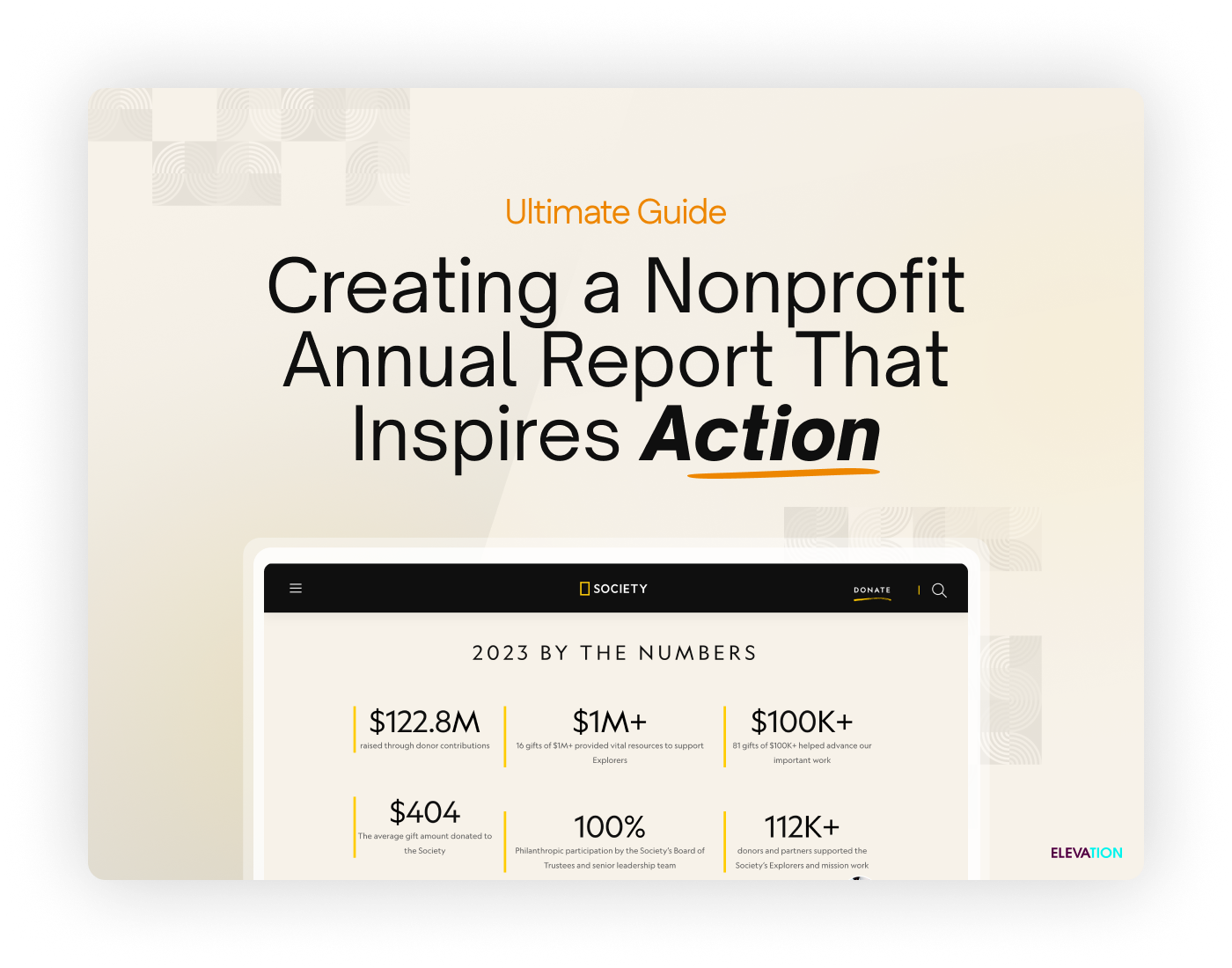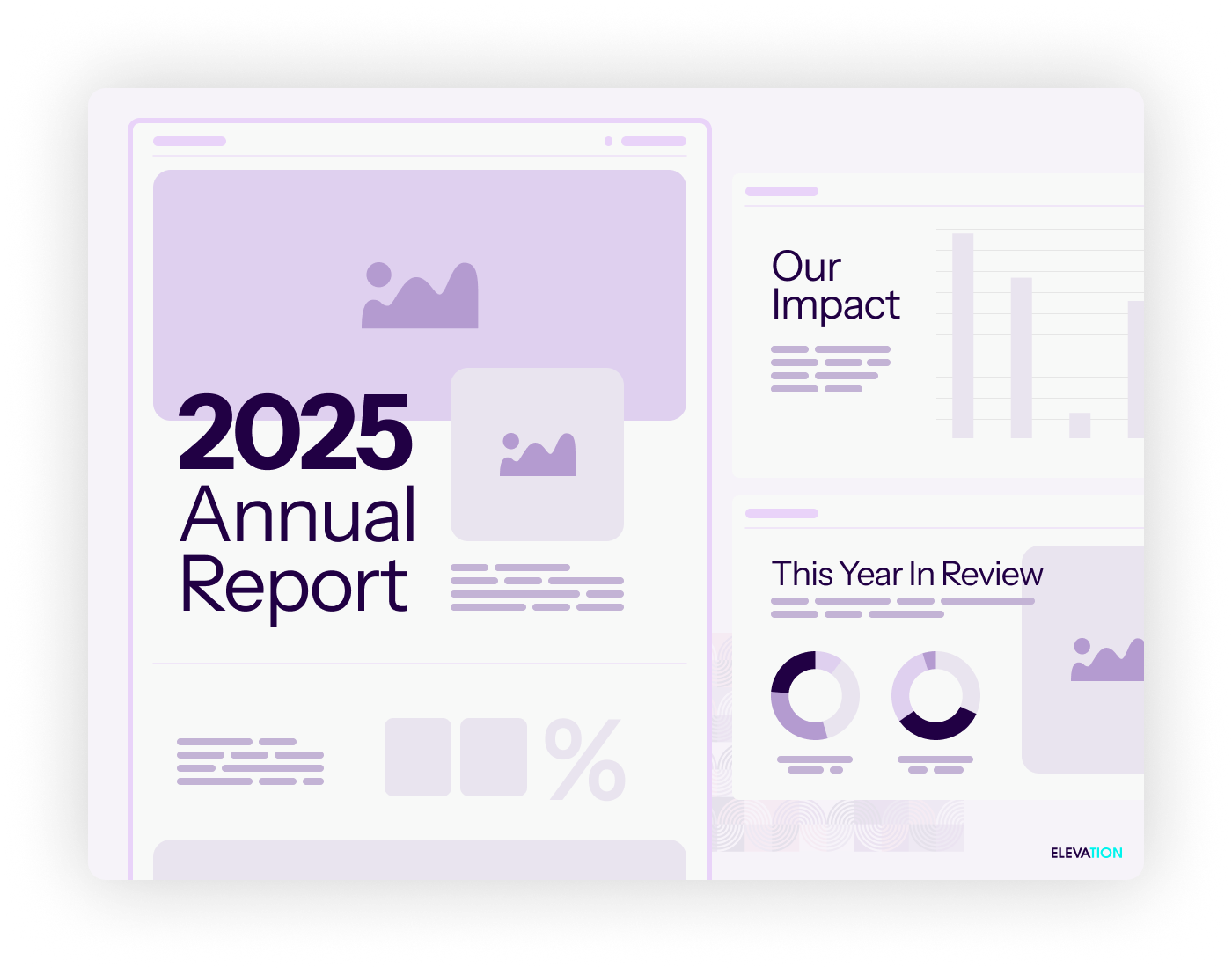
Women are educated donors. Many do a good amount of research before choosing an organization to donate to. Make sure your nonprofit’s information is readily available online in each of these areas:
- Make sure your address and contact information are easy to find on your website. Include them in the footer and on a separate “Contact Us” page.
- Same goes for any email marketing campaigns you send out, and always include an unsubscribe button.
- Create an infographic of your funds and make it available on your website and associated accounts. The easier it is for potential donors to learn about your nonprofit, the better.
- Update your nonprofit’s portfolio and report on GuideStar. This will also update your information on AmazonSmile and other associated sites so this is always good practice.
- Other sites commonly used to confirm your legitimacy: Charity Navigator, Give.org, and Charity Watch.
Know Your Donor Persona
Make sure to take into account generational differences among donors. What makes one generation take action is vastly different than what sparks action in younger donors.
When a Woman Retires

Interestingly enough, even though overall spending decreases, the amount donated to nonprofits and charitable organizations by retirees remains relatively stable. Make sure you continue to foster relationships with retired women and married couples.
Younger Women Are Giving Differently
While previously believed that the majority of young women give based on their religiosity, new research has found that young women without a religious affiliation give to organizations at two times the amount as women who are affiliated with religion, but infrequently attend. This research is a little complicated, so if you’re interested in learning the details, check out the published article. Compare your organization’s persona of the young female donor to these recently uncovered donor trends and decide what that means for your own organization.
Read our guide on fostering relations with millennial donations here.
Nurturing the $1 Million Woman Donor
Nurturing a donor of this kind takes patience, resources and intricate planning. WPI took a look at who these donors are, and why they donated. Based on this research, here’s everything you need to know to nurture that $1 million female donor.
Watch Your Language

Risk-takers Fund Change

Understanding the Social Identification Theory
Look for the higher profile donors who have expressed a personal connection with your cause. Women tend to donate to organizations that they identify with, based on the idea of the Social Identification Theory.
When you first find a potential donor who resonates with your nonprofit, introduce them to the community.
Invite like-minded individuals whether it be past donors who have had similar experiences, or the people your organization is affecting, to meet your potential donor. Share references that only those with a personal connection to the cause would understand. This is the first step to creating an ongoing and deeply emotional connection between your cause and your donor.
When Giving Your Pitch

They are also more likely to donate to systems-level change. Instead of helping the affected people, they put their money towards fixing a broken legal system, changing unfair policies or shaping public perception. A donation size this large can do a lot of good. If your organization isn’t reaching for systemic change, maybe it’s time to reconsider.
The Catch-22 of Recognition

Most Women Aren’t Born Millionaires

Understanding Giving Circles
Giving Circles (GCs) are a whole different playing field. As of 2016, GC’s had donated at least $1.29 billion to nonprofits and members of GCs give more time and money than those not involved. Older women make up the vast majority of giving circles, though it’s becoming increasingly popular among the younger generation. Along with donating, many are actively volunteering as well.
How to Build a Lasting Relationship with Your Giving Circles

It is estimated that over half of giving circles decide where their donations go based on a vote or consensus, which means you need to make touch points with many members. Reach out and initiate contact either online or in person. Here are a few ways you can get involved with a potential giving circle:
- Offer a learning opportunity like a webinar or a structured workshop. Do more than share about the good work of your organization in a hope to influence their donation decisions. Provide an educational opportunity or insight on topics or community issues they are interested in.
- Invite the GC to visit your nonprofit. Not only will this give them direct insight on what you do, it will also be the first step in fostering volunteers.
- Join their networking event. Many GC’s provide networking opportunities and events for their members. Look to see how your organization can be involved. Many members want to do more than give money.
- Pitch to them. 35 percent of GC’s invited representatives from nonprofits they were considering to teach them more about their organization. Have someone trained with a pitch deck ready at all times.
Find Your Influencers

Pay careful attention to your relationships with members of GCs, as their community is highly influential and meticulously connected.
Should You Reach Out to Established GC Members or New GC members?
If your organization is a religious organization, you will have more success reaching members of GCs that are well established and older. These members often join for social aspects. They are actively involved in reviewing grants and holding leadership roles. Be very transparent and open with them, and look for other ways to involve them in your organization.
If your organization is fostering social change, reach out to newer GC members and organizations, as the younger demographic is generally more diverse and more active in social movements. These members are looking to learn. Find ways to teach them about your issue and cause, and how they can get more involved in philanthropy. They are also more likely to raise outside funds, so get creative!
Telling Your Story
Your story is your lifeblood. It’s what women (if not most) donors really resonate with whether personally or empathetically when deciding where to donate. When sharing the story of your nonprofit, make sure you’re reaching these areas.
Show Your Work

Social Norms and the Rising Levels of Giving

Lean into Rage Donations
Following the 2016 elections, progressive organizations whose issues were debated on a national scale saw a large increase in donations from women (WIP). Women tend to donate with their emotions. Create a social media strategy that not only educates people on the matter, but also inspires.
I’m sure by now you understand your political ideological leaning. Pay attention to the national coverage. What are you solving that is of public interest? Connect with influencer accounts that educates or reports on your social topic. See if there are partnership opportunities. This is an audience who has already expressed care and connection to this topic. This is a great resource to utilize.
Utilize Social Media on #GivingTuesday

Utilize the giving platforms on each site. On Instagram, include the donation link in bio, as well as the swipe up to donate on your story. On Facebook, use their online fundraising tools.
Conclusion
Understanding the demographic of donors is an incredibly complicated topic. But I hope you learned some actionable things you can do to nurture these relationships and boost your donations. Bookmark this page and refer back to it later! Nurturing female donors is an ongoing task for nonprofits.
More information on the difference between male and female donors is continuously becoming available. Make sure to check back with the Women’s Philanthropy Institute, and read up on some of the incredible research they are conducting.
This concludes part two of our four part series: The State of Women in Nonprofits. Look out for new content every Friday of March.
*Most of these strategies were developed based on results from empirical research and surveys from the WPI. Each strategy is not guaranteed to work for all women; it is geared to work for the majority of women. Recognize the individuality within your donors and adjust your strategy accordingly.






